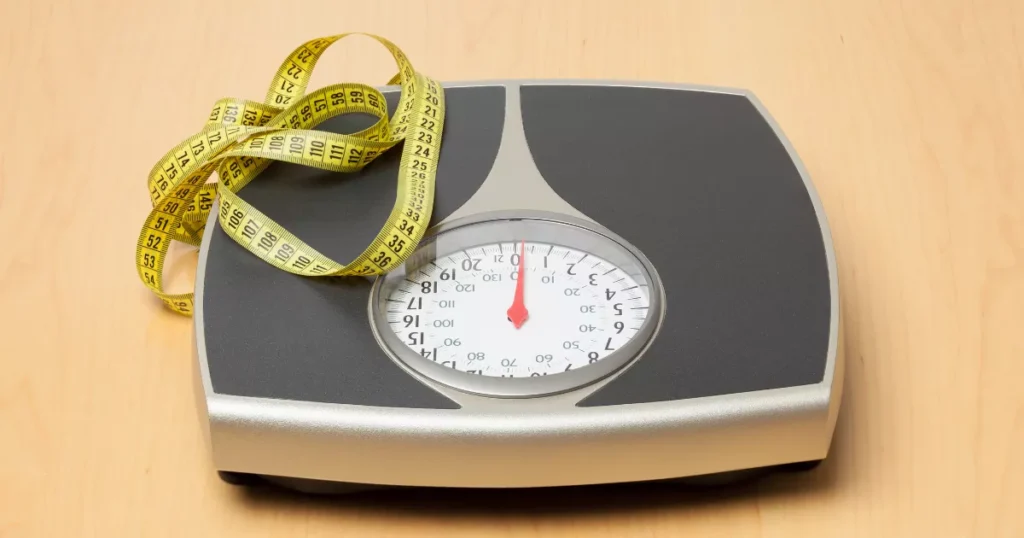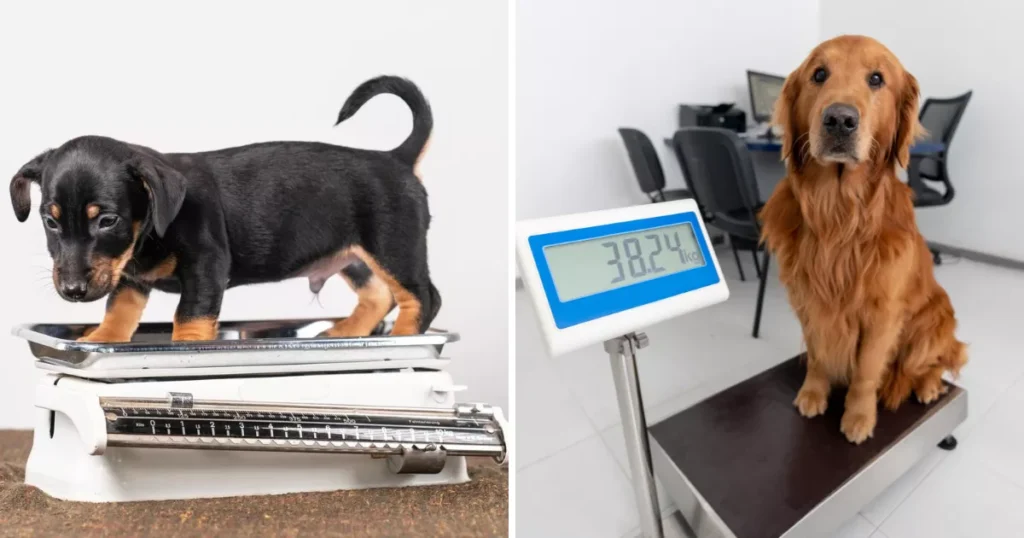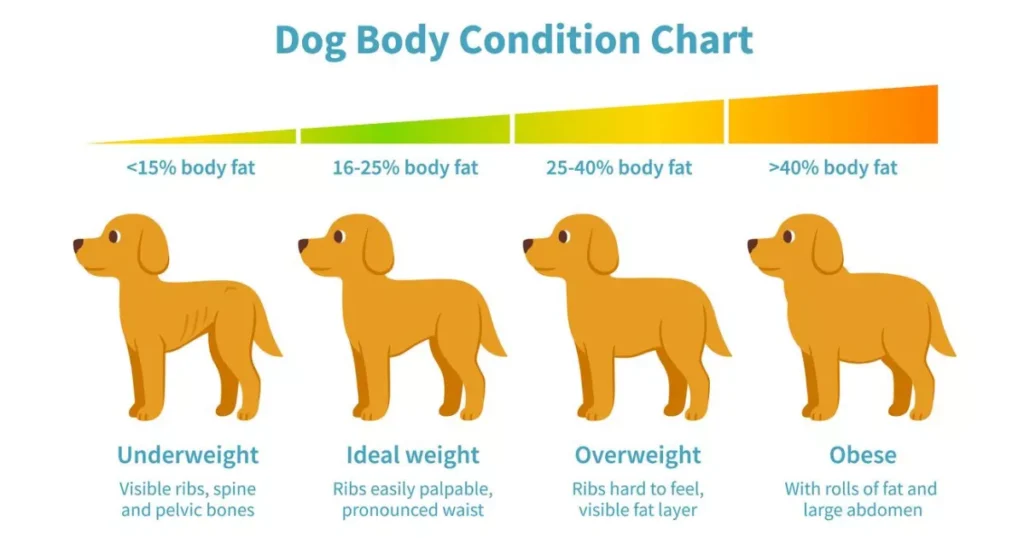We all love our furry friends, and ensuring their optimal health is a responsibility we bear as pet parents. A pivotal component of a dog’s health is its weight. Regularly checking and monitoring your dog’s weight is crucial to ensure they aren’t underweight or overweight. However, frequently visiting a vet just for weight checks might be cumbersome.
So, how can you accurately measure your dog’s weight at home? Let’s dive in!
1. Using a Regular Bathroom Scale

If you own a medium-sized dog, the regular bathroom scale in your home can be a handy tool for measuring your dog’s weight. Here’s how:
Step on the scale with your dog: Hold your dog securely in your arms, ensuring they are calm. Step onto the scale and wait for the reading to stabilize. Note down the combined weight of both you and your dog.
Weigh yourself alone: Next, place your dog down and step on the scale by yourself. Record your weight.
Do the math: Now, it’s just basic arithmetic. Subtract your weight (from the second measurement) from the combined weight (from the first measurement). The difference will give you your dog’s weight.
2. Going Digital

A digital scale offers a precise reading, making it a suitable option for all breeds.
For small dogs: If you have a pocket-sized pup, a baby scale is a fantastic choice. These scales are typically more accurate for lighter weights, ensuring you get an accurate reading for your little furball.
For the big pooches: For larger breeds, the kind of scales used in veterinary clinics is recommended. These scales can handle more weight and provide precise measurements.
3. Separate Weigh-Ins
This method is pretty similar to using a bathroom scale, but it emphasizes the importance of weighing separately:
Weigh yourself: Start by stepping on the scale alone. Note down your weight.
Weigh in with your dog: Now, hold your dog and step onto the scale. Note the combined weight.
Subtract to get the result: Just like before, subtract your weight from the combined weight. This difference will be your dog’s weight.
4. Using a Platform Scale
If you can access a platform scale, it’s a straightforward process:
Place your dog on the platform: Ensure your dog remains still and calm. Once the reading is stable, record the weight.
5. Monitoring Your Dog’s Body Condition

Beyond just the numbers on a scale, it’s vital to observe your dog’s physical condition.
Visual Assessment: Periodically inspect your dog. They should have a noticeable waist, and you should be able to feel — but not see — their ribs without pressing hard.
Body Condition Scoring: This method involves rating your dog’s body condition on a scale, typically from 1 to 5 or 1 to 9, with the ideal weight being in the middle. Your vet can provide you with a body condition score chart, or you can find one online.
The Takeaway
Consistently keeping tabs on your dog’s weight helps in early detection of potential health issues. Weight can be an early indicator of problems such as obesity, malnutrition, or other underlying health issues.
Maintaining a healthy weight isn’t just about aesthetics; it plays a crucial role in your dog’s overall well-being. A dog at its optimal weight will be more active, less prone to diseases, and generally happier.
In the end, regularly checking your dog’s weight is a small step that goes a long way in ensuring a long, healthy, and happy life for your four-legged friend. So, grab that scale and make weight check-ins a routine!
Frequently Asked Questions
What are some common household items that can be used to weigh a small dog? Apart from the usual bathroom scales, common household items like a baby scale, a kitchen scale (for very small breeds or puppies), or even a luggage scale (for slightly larger small breeds) can be used. Always ensure the dog remains still for accurate readings.
How often should you weigh your dog at home? Ideally, adult dogs should be weighed once a month. Puppies or dogs under medical observation may need to be weighed more frequently, such as weekly or bi-weekly, to track their growth or health progress.
Are there any precautions to take when weighing a dog at home? Absolutely. Always ensure the scale is on a flat and stable surface to avoid tipping. For dogs that are restless, it might be a good idea to have a second person to help keep them calm. Avoid forcing or restraining them in a way that might cause distress or injury.
Can I use a human scale for my dog? Yes, human scales can be used, especially for the weight subtraction method detailed earlier. For small dogs, the readings can be fairly accurate, but for larger dogs, a dedicated pet or platform scale is preferable.
What if my dog is scared of the scale? Try introducing the scale gradually. Begin by letting them sniff and explore it. Place treats on the scale to create a positive association. Over time, with patience and positive reinforcement, many dogs will become accustomed to it.
How do I know if my dog's weight is healthy? Apart from weighing, visual assessments and body condition scores can give an indication.
What should I do if there's a sudden change in my dog's weight? Any sudden or drastic weight changes should be a cause for concern. Consult your veterinarian promptly. Rapid weight gain or loss can be indicative of underlying health issues.
Can I weigh a pregnant dog at home? Yes, you can, but it's essential to be gentle and ensure the dog is comfortable. Monitoring weight during pregnancy can be vital. However, regular vet check-ups during the gestation period are also crucial.
Do different dog breeds have different ideal weights? Absolutely. Breeds vary significantly in size and build, which means their ideal weights differ as well. It's essential to familiarize yourself with the recommended weight range for your dog's specific breed.